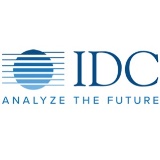Unified Communications: The Role of Broadband in the 5G Era

The Role of Broadband in the 5G Era
Fifth-generation cellular technology is slated for broader commercial deployment this year, raising many questions about its value vis-à-vis alternative high-speed broadband technologies. This paper examines the issues.
Questions posed by: Comcast Business
Answers by: Jason Leigh, Senior Research Analyst, Mobility
Why does 5G represent such a promising technological advancement over the status quo?
As the digital world we live in continues to evolve and seeks to connect everything, everywhere, the need for fast and nimble, yet reliable connectivity is increasingly paramount. The fifth generation (5G) of cellular technology continues to make headlines with the promise of achieving a fully connected world linking people, homes, things, and communities. It is set to make new inroads in 2019 as initial launches of the technology come to market in the United States.
Currently 4G, also known as LTE, faces constraints in the amount and speed with which it can transmit data, as well as limitations on the number of simultaneous connections it can support. 5G represents an exponential leap forward in connectivity performance, with a tenfold increase in data rates and the ability to drive sub-millisecond latency, while supporting more than 1 million connections per square kilometer. These features will enhance consumer and business consumption of data-intensive content, but more importantly, they will make 5G a critical component of business digital transformation.
From facilitating the development of flexible factory floor layouts that can be rapidly reconfigured to support product redesigns to allowing the millions of sensors embedded in Smart City solutions to fluidly share data and deploy real-time resource responses to work site safety improvements resulting from the use of precision remote-controlled construction equipment in high-risk environments, there are few sectors that would be insulated from 5G's potential impact.
What are some market misunderstandings surrounding 5G?
With any new technology, it is important to look beyond the hype and level-set expectations with what deployments in the "real world" will look like. 5G is no different. With the monumental leaps in connectivity performance that 5G portends, it is easy to think of LTE versus 5G as an either-or proposition. However, 5G will not replace LTE outright. Recent enhancements in LTE performance are realizing 1Gb download speeds and latency over the air interface in the sub-10ms realm. These performance levels are where the initial conversation around 5G first began. In addition, while many current use cases could benefit from 5G's performance advantages, given the costs involved, it is worth asking if the use case truly mandates 5G or whether the efficiencies gained are material enough to offset the increased cost of 5G connectivity and devices.
Finally, business use cases leveraging 5G in the near term and midterm will be entirely bespoke solutions. Truly scalable, or off-the-shelf, business use cases for 5G are at least five years away. The intense level of customization for most 5G-enabled business solutions will necessitate a considerable up-front capital investment in the form of new equipment, site retrofitting, and consulting fees to incorporate 5G into existing operations, assuming that the organization is even within a 5G coverage footprint. Though mobile network operators will aspire to shift data-intensive, mission-critical use cases to 5G to lighten the load on the LTE network, there is no customer incentive to move use cases that function sufficiently on LTE to a new connectivity band. These factors ultimately mean that LTE and 5G will coexist for a decade or more.
With two mobile network operators looking to leverage 5G for home broadband service, what are the key ways 5G and fixed broadband differ?
On the surface, the debate between 5G and traditional broadband services could be summed up as one is mobile and the other is not. However, with some mobile network operators seeking to leverage 5G to enable fixed wireless access (5G FWA), it is important to understand how both technologies compare under this use case scenario. 5G FWA involves providing high-speed internet data service to multiple homes via a wireless signal transmitted from a centrally located node instead of running DSL, coaxial, or fiber lines direct to each home. Depending on the number of houses, local topography, and which low-/mid-/high-band spectrum is being utilized, a single small cell radio could provide functional, high-speed coverage to homes within as much as a 400m or as little as a 100m radius.
From a data-rate and bandwidth-performance perspective, fixed and wireless broadband offerings stack up well against each other. 5G is expected to provide gigabit-per-second service, which fixed broadband provides through the DOCSIS 3.1 standard. The advantage in latency might tip to 5G, with consistent performance below 10ms and the potential for sub-millisecond latency. It's possible that cable or DSL service might see latency approaching 10ms. That assumes that the fixed broadband industry decides to rest on its laurels. Instead, the industry recently announced an initiative designed to compete with 5G by developing future fixed broadband networks that will be able to deliver data rates north of 10Gbps.
Connection stability is an area where fixed broadband may have advantages. Many mobile network operators are deploying 5G services, including 5G FWA, on high-band spectrum known as millimeter wave (mmWave). Signals at the higher frequencies are often subject to signal interference from environmental obstacles (e.g., snow, trees) and in non-line-of-sight transmission scenarios. Fixed broadband deployments are typically not subject to these types of signal disruptions.
What are the biggest barriers to 5G displacing fixed broadband in the market?
While 5G FWA can provide a high-speed, reliable wireless broadband connection on par with the performance of today's fixed broadband, translating that performance into a scalable, market-disrupting service remains a challenge for several reasons.
The initial barrier 5G FWA service needs to overcome is that of fixed broadband's mindshare, especially given 5G's nascent status, limited availability, and the fact it is up against an established, available now behemoth. Consumers and businesses are familiar with the various machinations of fixed broadband (i.e., cable, DSL, fiber) that have been available in most markets for decades. There are approximately 110 million fixed broadband subscriptions in the United States according to the ITU, which equates to an 87% penetration rate of the 126 million U.S. households.
5G FWA, on the other hand, is still conceptual to many as it is only available in parts of four U.S. cities (Houston, Indianapolis, Los Angeles, and Sacramento) as of January 2019, with limited coverage for the 11.2 million households represented in those cities. While the number of U.S. cities receiving some form of 5G coverage will increase in 2019, most Americans won't see anything resembling ubiquitous 5G coverage until 2020 or beyond, when low-band 5G offerings begin to be rolled out more broadly. In addition, mobile network operators have stated that 5G is best suited for dense sections of cities — markets that are already wired for fixed broadband — and that covering an entire metro area is not economically feasible.
Finally, there is the cost for deploying 5G FWA. To build out 5G services, mobile network operators are engaging in a capex-intensive infrastructure spend to upgrade and expand to 5G. They must acquire the appropriate low-, mid- or high-band spectrum at auction and then deploy 5G-enabled equipment. While some can soften the capex hit by upgrading to dual-purpose equipment that supports LTE today, which can be converted to 5G later through a software upgrade, the nature of the 5G spectrum changes the traditional cell tower paradigm. Using a single tower to provide coverage to thousands will not be tenable.
High-band spectrum used for 5G, millimeter wave, is subject to signal interference from physical obstacles and can only cover an extremely limited footprint from a single radio head. As a result, mobile network operators must densify their network by installing a plethora of small cells, as close as every 300m in some scenarios, on utility poles, buildings, and new towers. All these new small cells will also require expansion of the fiber network to support backhaul. The result is an expensive bill for mobile network operators to deploy 5G. And how those costs will be passed along to 5G customers is a major unknown at present.
Direct competition aside, are fixed broadband and 5G mutually exclusive propositions?
When one thinks of fixed broadband and 5G solely as content delivery mechanisms, the equation is essentially one or the other. But thinking about each less as a technology unto itself and more generally as connectivity tools that enable other services, the dividing line between the two is much less clear. The high data rates offered by fixed broadband and 5G, along with the traditionally low latencies of both networks, enable other technologies like artificial intelligence and virtual reality to operate more efficiently and effectively. Or traditionally static tasks can find a new life through the addition of a mobility dimension provided by fast, reliable connectivity performance. The key to fixed broadband and 5G's future lies in the new use cases beyond connectivity that emerge because of the continuing digitalization of consumers' lives and businesses' operations.
How can fixed broadband and 5G complement each other in serving business clients?
Lost in the conversation about 5G and fixed broadband is the complementary role that each can play in serving business clients. While 5G can bring high-speed, data-rich content on its own, it still requires backhaul to the basestations and radio antenna. Combining preexisting fixed broadband infrastructure can provide backhaul to connected 5G-enabled transmission nodes to expand the mobile connectivity footprint or new mobility dimensions to business operations.
Consider for a moment a traditional corporate campus or manufacturing facility. Chances are, much of the business is already wired with some broadband infrastructure. By linking the existing broadband to 5G radios and basestations, the connectivity footprint can immediately be expanded throughout the campus and enable more mobility.
A few of the potential use cases for a hybrid fixed broadband–5G deployment include:
- Increased real-time 4K video security monitoring. When combined with advanced AI and cloud compute, it is possible to deploy facial and contextual recognition applications to address security incidents and reduce the response time for resource deployment. Wireless connectivity enables more discrete placement of cameras or the use of drone/robot-mounted cameras to patrol the corporate campus.
- Workforce mobility and security solutions. With 5G connectivity embedded in employee desktops and laptops, employees could move about campus freely, with 5G–fixed broadband connectivity providing a seamless, desktop-like user experience wherever the business needs require. In addition, corporate data security can be enhanced with 5G-enabling desktop virtualization, allowing the entirety of a device's data to reside in and be accessed from the cloud with no noticeable decrease in performance, thus mitigating the risk posed by corporate device theft or loss.
- Command and control of mobile/robotic operations. A high-speed, low-latency network enabled by a combined 5G–fixed broadband solution could allow increased usage of on-premises robotics and add more advanced elements of mobility: Connected security drones could patrol the corporate campus while edge AI-enabled cleaning and groundskeeping robots maintain the facility and automated factories are reconfigured on demand without extensive rewiring as product development arcs shift.
MESSAGE FROM THE SPONSOR
Achieving digital transformation is a journey for any business as technology continues to evolve and change in real time. Now more than ever, customers and employees expect experiences that are digital and connected wherever they go and the technology required to enable that is changing every day. Powered by the nation's largest Gig-speed network, Comcast Business offers business of all sizes fast, reliable connectivity and advanced applications that enable them to go beyond fast and deliver for customers and employees every day.
To learn more about Comcast Business and solutions that can power your distributed enterprise, visit ComcastBusiness.com/Enterprise.
IDC Custom Solutions
This publication was produced by IDC Custom Solutions. The opinion, analysis, and research results presented herein are drawn from more detailed research and analysis independently conducted and published by IDC, unless specific vendor sponsorship is noted. IDC Custom Solutions makes IDC content available in a wide range of formats for distribution by various companies. A license to distribute IDC content does not imply endorsement of or opinion about the licensee.
External Publication of IDC Information and Data — Any IDC information that is to be used in advertising, press releases, or promotional materials requires prior written approval from the appropriate IDC Vice President or Country Manager. A draft of the proposed document should accompany any such request. IDC reserves the right to deny approval of external usage for any reason.
Copyright 2018 IDC. Reproduction without written permission is completely forbidden.
Fifth-generation cellular technology is slated for broader commercial deployment this year, raising many questions about its value vis-à-vis alternative high-speed broadband technologies.
Locked Content
Click on the button below to get access
Unlock NowOr sign in to access all content on Comcast Business Community
Tags
Learn how Comcast Business can help
keep you ready for what's next.










